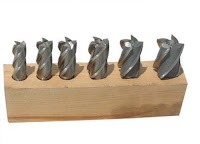The advent of Computers lessened the requirement for human intervention in just about all aspects of our daily lives.This is especially true in the industrial sector now that production is virtually automated.
Precision and precision
Computer numerical control has been able to help companies in terms of precision. With the requirement for more complex designs and more complicated operations,human workers could not cope with the required precision that accompany advancement.
CNC machines were able to alter which idea by allowing increased precision and lesser error percentages with regards to production.
Another important enhancement that
CNC has brought with it is the increased accuracy. The dimensions of components have to be very accurate.As well as since an increase in production speed also increases the error ratio,
CNC has helped lower that ratio by the increased level of automation and the error recognition capabilities that computers have.
 |
| CNC Machine Lathe |
Pace
In the industrial sector,pace is of the essence.With CNC technology,the normal production capacity has been elevated exponentially.This means that effective and accurate production methods have been developed.Mass production requires more scrutiny for mistakes and mistakes.However,anomalies can also be corrected.The encoding structures of CNC machines can be altered in a fast way.This means that mistakes do not have as serious an impact as they had before CNC was improved to this degree.
Machine versatility
CNC machines have become very versatile with regards to the tools that they use.They can easily be assigned to different tasks and thus can be very productive.Tools and systems can be switched without compromising the speed of the production. Aside from this,one machine can do more than one task at a time.This exceeds the normal human capabilities as it allows more tasks to be accomplished at a faster rate compared to before.
Furthermore,when 1 machine tool breaks down,it may easily be pulled off the power grid to prevent it from impacting the whole production cycle.It may then be replaced or repaired on the spot.
 |
| CNC Milling Machine |
Lesser human treatment
Since component production is a very tedious and repetitive procedure,human error skyrockets as time passes.This is due to fatigue along with other factors.Furthermore, the ability of an individual degrades due to psychological and emotional factors.This means that if a person creates the same job for a certain amount of period,the person may eventually get bored or tired or both.This increases the possibility for the human to commit an error and thus causes a drop within the efficiency rating of that individual.A machine,however,does not get tired or bored.A machine does not have any concern at all.
Therefore,a machine increases efficiency ratings through speeding up production and getting rid of or reducing factors which threaten efficiency.In this case,1 must simply program the equipment to start a cycle.In addition, humans have to be fed,paid,and rested. Machines only have to be rested when failures occur to often and they need not be paid or given.
This brings us to the conclusion that companies will be able to save a lot in the long run. Whilst investing in
CNC machines is not cheap,maintenance will only cost a fraction of what will be paid in order to manual laborers.








































